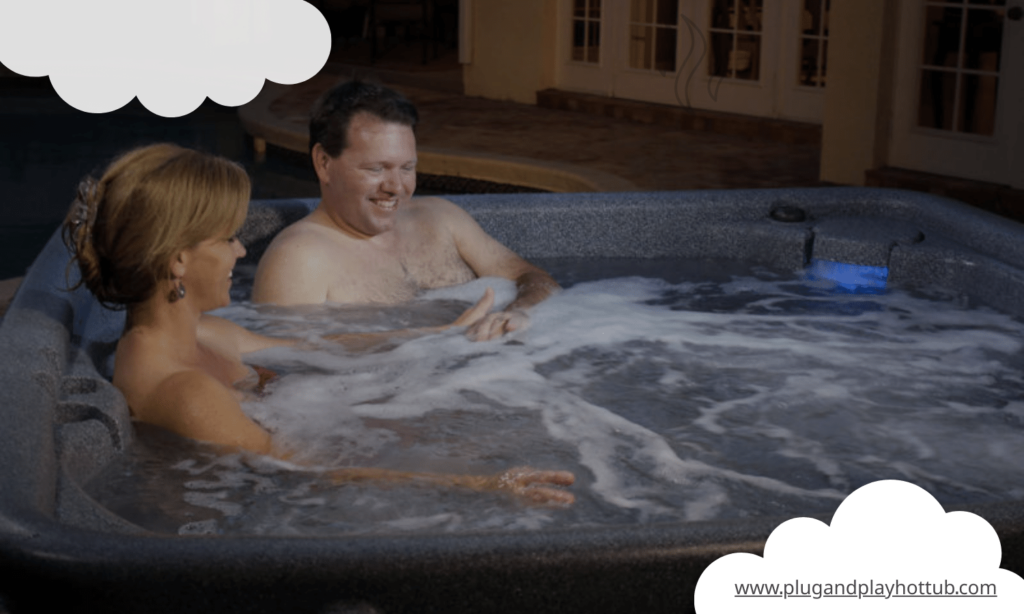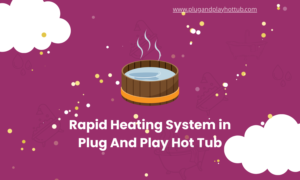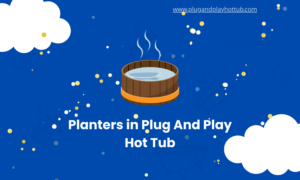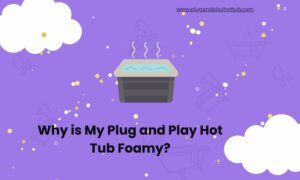
Air jets are a popular feature in modern hot tubs that provide a massage effect by blowing air bubbles through the water. Here’s an overview of how air jet systems work and what they offer hot tub owners. These jets differ from water jets in how they create bubbles and the massage benefits they provide.
What Is an Air Jet System?
An air jet system uses an electric air blower that pushes air through pipes and out small holes or nozzles along the sides and seats of the hot tub. This results in streams, jets, or bubbles of air that create a gentle to strong massage effect in the water.
The air blower and associated piping are the key components that differentiate an air jet system from a water jet system.
Air jets differ from water jets which pump water rather than air. Many hot tubs have a combination of both jet types to provide different massage experiences. The bubbles created feel different than water jets, providing unique massage benefits.
How Do Air Jets Create Bubbles in the Water?
Air jet nozzles are designed to chop up the air stream and diffuse it into the water as tiny bubbles. This is achieved through an aeration chamber in the jet nozzle that mixes the air and water right before it exits the holes.
The aeration chamber uses changes in air pressure to create a venturi effect that draws in and chops up the air into micro-bubbles.
Some jet heads also spin or rotate to better disperse the air into the tub. The faster the velocity of the air stream, the smaller the bubbles it produces. So rotary heads create a mix of tiny and larger bubbles for massage variation.
What Is the Benefit of Air Jet Massage?
There are a few key benefits that air bubble jets offer:
- Whole-body relaxation – Air jets provide a gentle, stimulating massage as you sit or lie in the tub. The bubbles relieve muscle tension, boost circulation, and create an overall calming effect across your whole body.
- Pain relief – The air massage can target sore muscles and joints to alleviate pain from injuries, arthritis, fibromyalgia, or athletic activity. Bubbles provide gentle mobilization.
- Stress relief – The combination of heat, buoyancy, and massage offers proven stress reduction. The massage distracts the mind and relaxes tense muscles.
- Varied massage types – Jets can be adjusted or directed to offer different bubble sensations from stimulating to gentle. Air volume, speed, and direction controls allow for customized massage.
How Are Air Jet Systems Powered?
The air blower unit that feeds air to the jet system uses a good amount of energy, often 1500 to 3000 Watts when fully running. This high wattage is needed to push enough airflow volume to power multiple jets.
On some hot tubs, the blower activates automatically whenever the jets are switched on. On others, owners need to turn the blower on separately after activating the pumps. This allows them to choose bubbles or water jets.
Key Air Jet System Components
An air jet setup requires several components:
- Blower – Electric-powered fan that pushes high volumes of air through the system. It feeds the entire pipe network.
- Piping – A network of plastic pipes that distribute air from the blower into the hot tub walls and seats. Design affects the bubble feel.
- Control valves – Adjust airflow to specific jet groups. Important for customizing massage.
- Jet nozzles – Openings of various sizes and designs that aerate and diffuse the air. Shape impacts bubble size.
- Air control knobs – Dials next to groups of jets to control air volume. Allows users to change massage intensity.
How Much Air Jet Usage Will Impact Energy Costs?
Air jet systems require significant power, often 1500 to 3000 Watts when fully running. This can represent 50% or more of the energy demand compared to water jets. So having the air blower and pumps on simultaneously will consume the most energy. However, many air jet systems allow the air blower to be turned off while keeping the water jets running.
Most experts recommend using air jets in 10 to 20-minute sessions, then switching to just the water jets or turning the hot tub to standby mode. This will help manage energy costs. Shorter sessions are best for cost and massage effectiveness.
In Conclusion
Air jet systems provide an invigorating massage by blowing streams of air bubbles into hot tub water. Understanding how they work and their energy use can help owners maximize enjoyment while keeping operating costs reasonable. With proper care, air jet components should provide many years of reliable performance.
| Feature | Air Jets | Water Jets |
|---|---|---|
| Massage Action | Air bubbles | Powerful streams of water |
| Massage Type | Gentle stimulation | Invigorating kneading |
| Control | Adjustable air volume | Adjustable water flow |
| Energy Use | High | Lower |
| Cost | Higher energy expenses | Lower operating costs |



